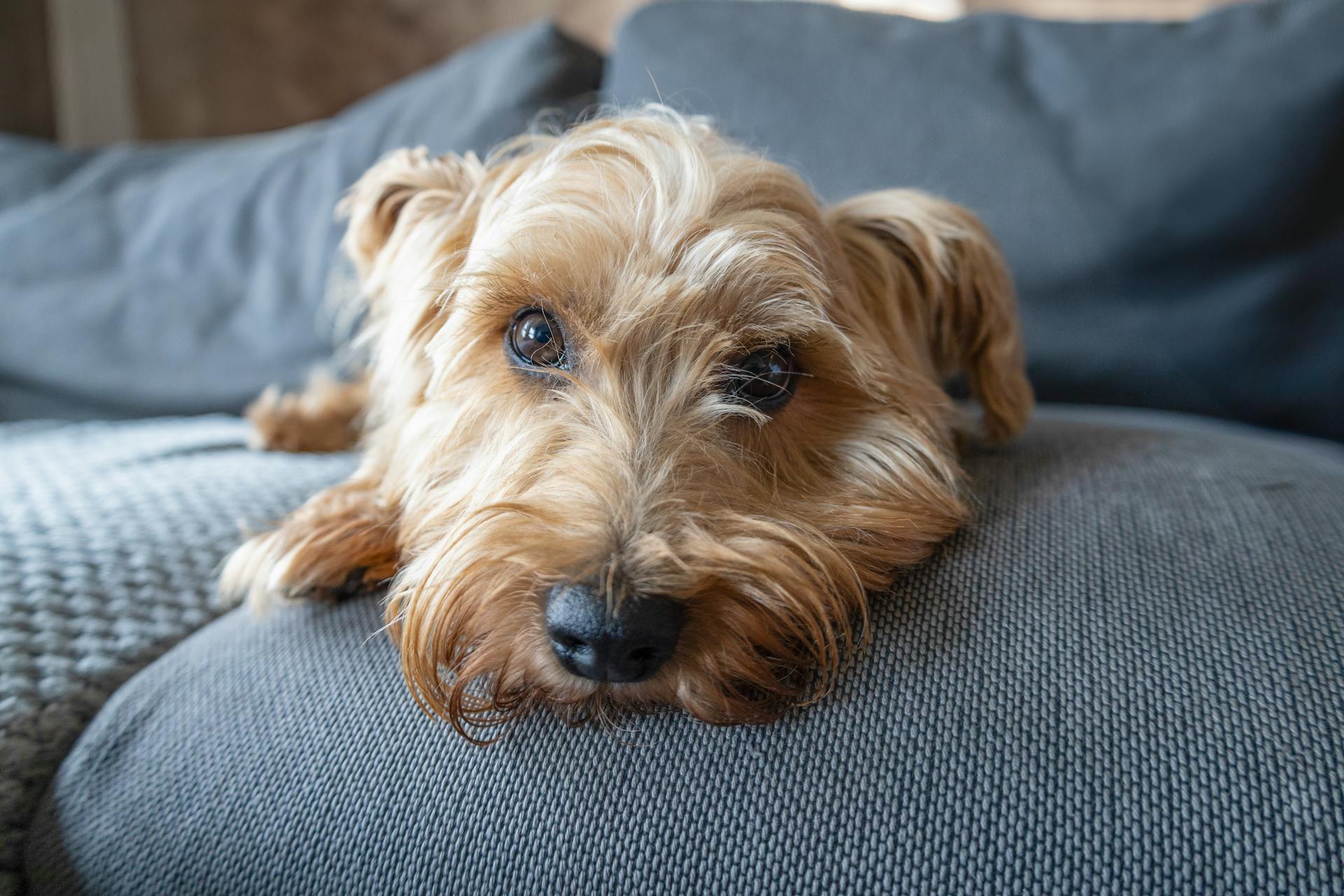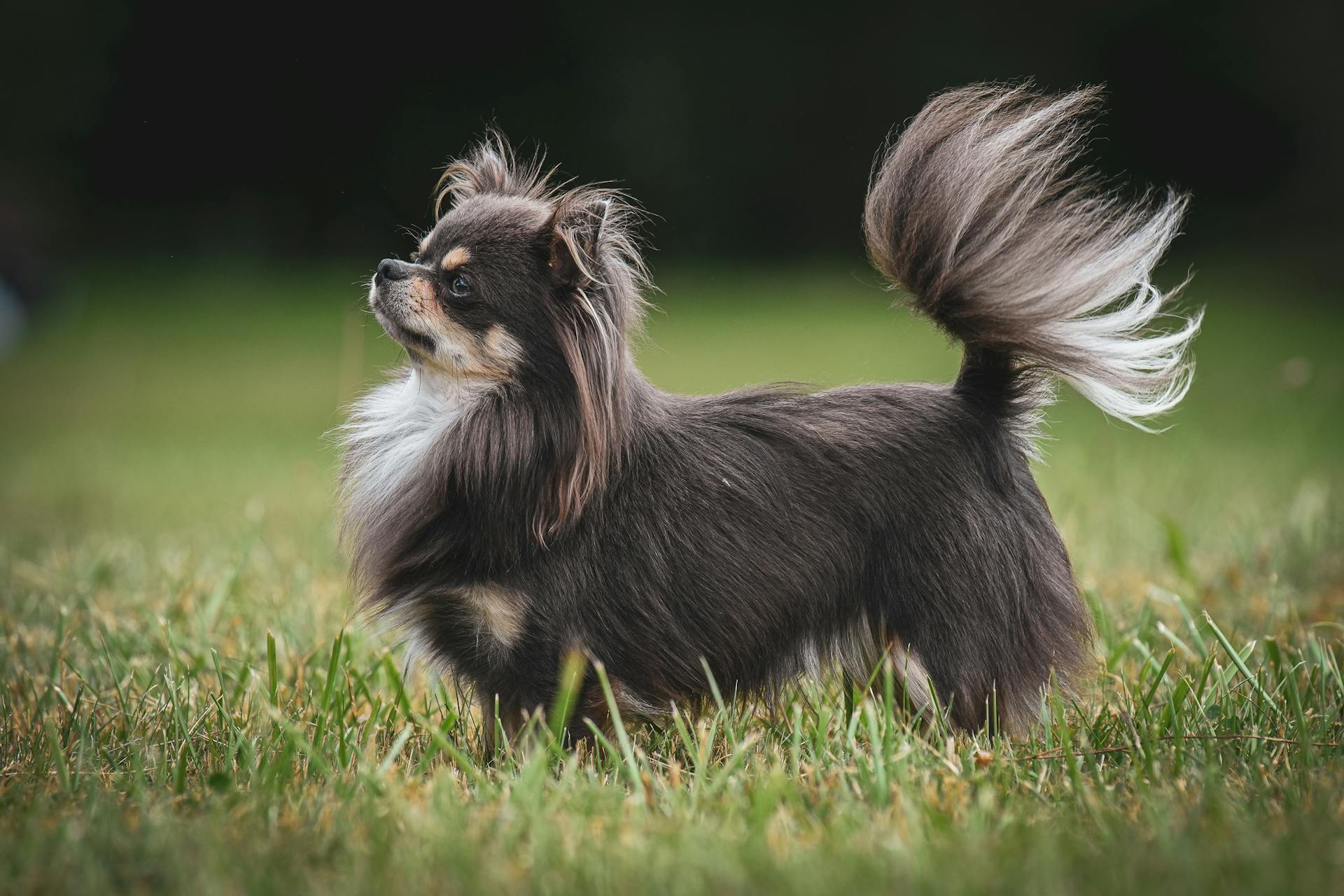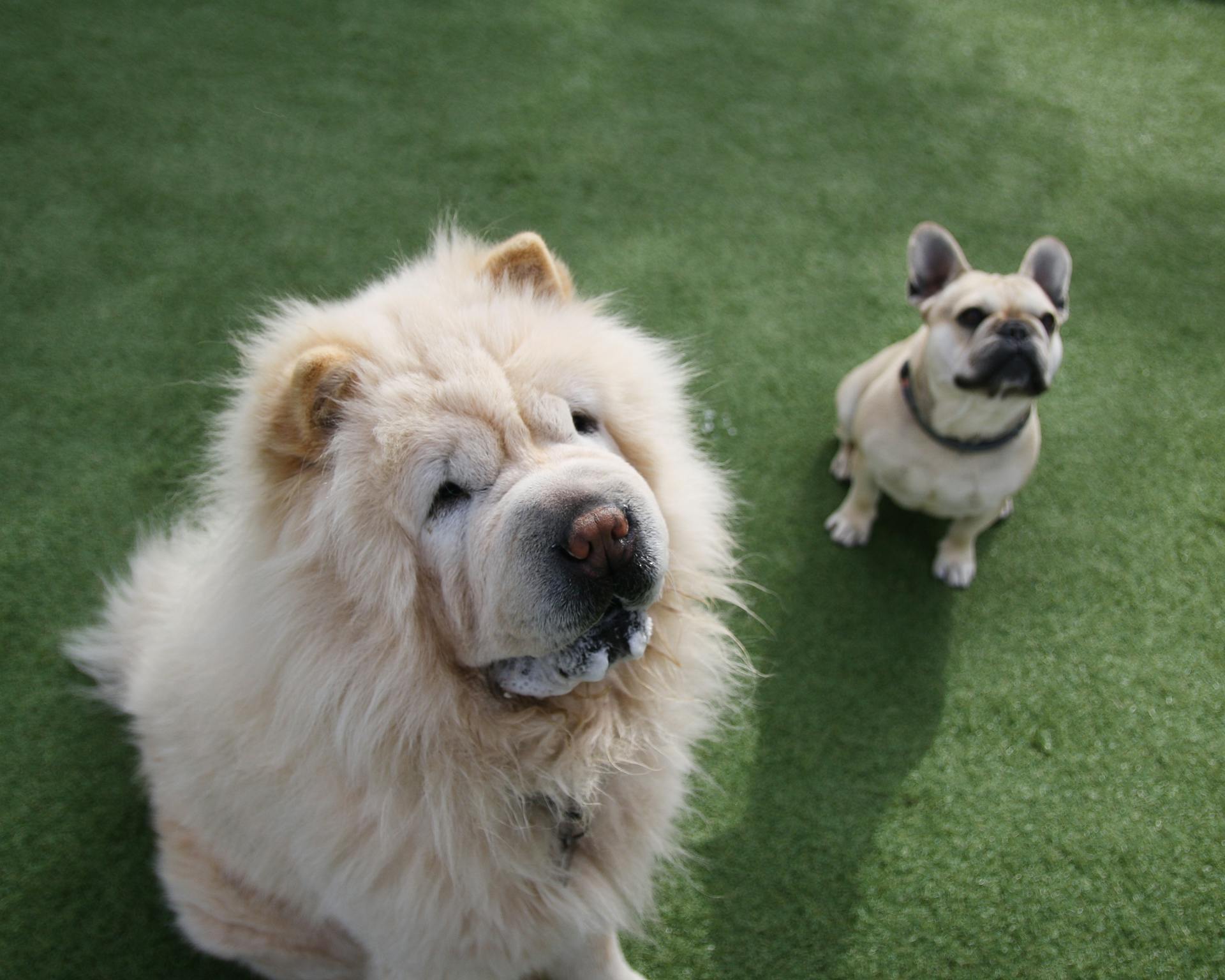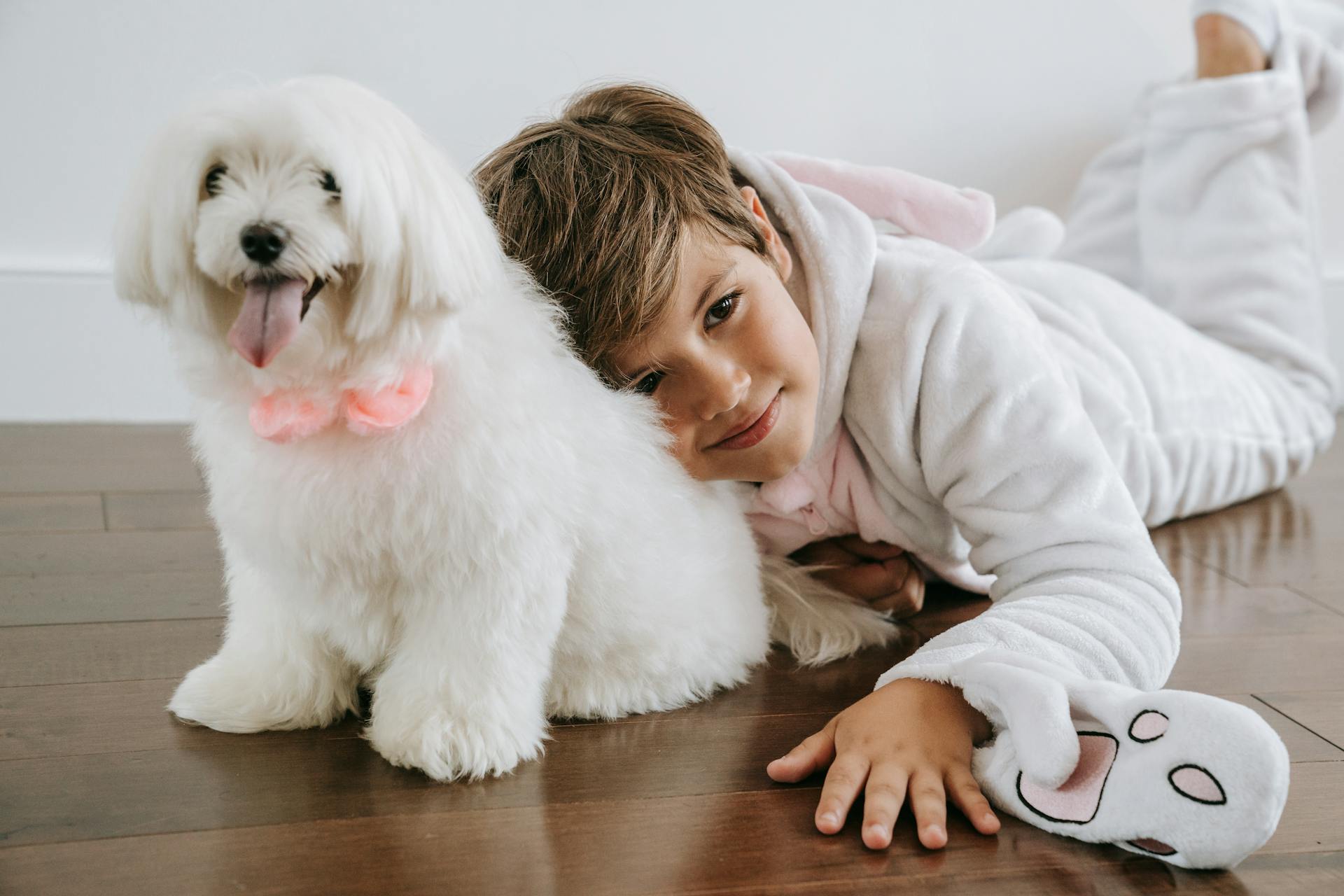
Fluffy Norfolk Terriers are a delight to have around. They have a gentle, affectionate nature that makes them a great addition to families with children.
Their small size, typically weighing between 8-11 pounds, makes them a perfect pet for city dwellers or those with limited space. They are relatively low-maintenance pets.
These dogs are relatively easy to groom, requiring only occasional brushing to prevent matting.
History and Origins
The Norfolk Terrier has a rich history that dates back to the East Anglia region of England, where they were bred for their keen hunting abilities and fearless demeanor.
Originating from this region, the breed was initially grouped with the Norwich Terrier, but the Norfolk Terrier has folded ears, distinguishing it from its pricked-eared cousin.
Bred for courage and tenacity, these terriers were invaluable assets to farmers and rural communities, helping to control vermin and pests on their properties.
Their small but mighty presence made them beloved pets and occasional stars of the silver screen and literature, endearing themselves to audiences worldwide.
Related reading: Dogs Breeds That Start with B
The Norfolk Terrier's history is a fascinating journey through the picturesque countryside of England, where they were favored for their hunting abilities and treasured by farmers and rural communities.
In the past, they were referred to as Cantab terriers or Trumpington terriers, taking their names from the places in the United Kingdom where they were most commonly bred.
The breed was officially recognized as a distinct breed by the English Kennel Club in 1964 and later by the American Kennel Club in 1979, solidifying their place in the world of dog breeds.
Explore further: American Kennel Club Lancashire Heeler
Physical Characteristics
The Norfolk terrier is a small, sturdy dog with a well-balanced and slightly rectangular build. They stand about 9 to 10 inches at the shoulders on average.
Their expressive dark eyes sparkle with intelligence, while their drop ears frame their face exquisitely. The tails of Norfolk terriers are set high, often docked for historical working purposes, giving them an alert and perky appearance.
Their wiry, weather-resistant double coat is one of their most distinctive features, with a harsh and straight outer coat providing protection from the elements. The undercoat is soft and insulating, adding to their overall charm.
What Do They Look Like?
The Norfolk terrier is a small, sturdy dog with a well-balanced and slightly rectangular build.
Their expressive dark eyes sparkle with intelligence, and their drop ears frame their face exquisitely. Their wiry, weather-resistant double coat is one of their most distinctive features.
The outer coat is harsh and straight, providing protection from the elements. The undercoat is soft and insulating.
Coat color potentials vary but include shades of red, wheaten, black and tan, and grizzle. Their expressive eyes are often dark brown, although some variations exist.
Their tails are set high, often docked for historical working purposes, giving them an alert and perky appearance.
Worth a look: Dark Border Terrier
What Size Is It?
The Norfolk terrier is a petite breed, epitomizing the essence of small and mighty. They stand about 9 to 10 inches at the shoulders on average.
Their compact size makes them easily transportable and adaptable to various living environments. This is especially beneficial for city dwellers or those with limited space.
The average weight of a Norfolk terrier is between 11 and 12 pounds, highlighting the breed's tough build. This sturdy build is a testament to their robust nature.
Temperament and Personality
The Norfolk Terrier is a bundle of personality in a compact body, with a vivacious, loving, and self-assured demeanor that's one of their most distinguishing traits.
Their spirited personalities can make them willful and independent, but they're also quick learners with consistent training. This breed thrives on mental and physical stimulation, so they need activities that challenge their minds and bodies.
Norfolk Terriers are naturally curious and love to investigate new smells and sights, demonstrating their heightened sense of awareness. They're always on the lookout for adventure and will chase squirrels and rabbits if given the chance.
Despite their energetic nature, they're loving and affectionate dogs that form strong bonds with their owners through loyalty and devotion. They adore human company and love cuddles and petting.
With their hardy build and positive attitude, Norfolk Terriers are an excellent choice for households with children. They're wonderful companions for kids of all ages, but it's essential to supervise interactions to ensure everyone's safety and comfort.
In general, Norfolk Terriers are friendly with children and other pets, but they can be jealous if not entertained. They're intelligent dogs that require consistent training and mental stimulation to prevent boredom and misbehavior.
Take a look at this: Water Loving Dogs for Short Nyt
Care Essentials
Caring for a fluffy Norfolk Terrier requires attention to their unique needs.
A balanced diet rich in nutrients is essential for their health and happiness, so choose a high-quality dog food that meets their nutritional requirements.
Proper portion control is crucial to prevent weight gain, especially given their small stature.
Daily walks and playtime are a must to keep their muscular bodies in shape and their minds sharp.
Mental stimulation is equally important, with puzzle toys and training sessions keeping their intelligent minds engaged and preventing boredom.
Regular brushing is a must to keep their double coat tidy and free of mats, providing an opportunity to bond with your pup.
Brushing also helps prevent skin problems and keeps their coat looking its best.
Here are the key aspects of care for a fluffy Norfolk Terrier:
- Exercise: Regular walks, playtime, and interactive toys are essential to meet their energy requirements.
- Grooming: Regular brushing and occasional hand-stripping (performed by a professional groomer) are necessary to maintain their coat's texture.
- Socialization: Early socialization is vital to ensure they get along well with other animals and different people.
- Training: Consistent training using positive reinforcement methods is crucial to harness their intelligence and energy positively.
- Health Care: Regular vet check-ups are important to monitor their health and address any potential issues promptly.
- Diet: A balanced diet appropriate for their age, size, and activity level is essential, with proper portion sizes and dietary recommendations determined by a veterinarian.
Grooming is an essential part of care, helping to prevent matting and tangling, and keeping their coat in good condition.
Regular grooming sessions can help control shedding and lower the risk of skin problems.
Feeding Guide by Life Stage
As a Norfolk Terrier owner, you want to ensure your furry friend is getting the right amount of food at each stage of their life. Here's a straightforward guide to help you nourish your vibrant Norfolk Terrier from playful puppy days to their distinguished adult years.
For Norfolk Terrier puppies under one year, it's essential to feed them high-quality puppy food designed for small breeds. This food should be rich in essential nutrients to support rapid growth and the development of a robust immune system.
Puppy-specific kibble or wet food should be dense in calories yet balanced to fend off obesity. Typically, a Norfolk puppy will need about ¼ to ⅓ cup of food per meal, served three to four times a day, depending on their energy levels and body weight.
As your puppy grows, watch their growth closely and adjust portions to maintain optimal body condition without overfeeding. Intelligent and easily trainable, Norfolk terrier puppies respond well to positive reinforcement, so use healthy treats like small pieces of veggies or fruits for training sessions.
Take a look at this: Best Food for Rhodesian Ridgeback
For adult Norfolk Terriers between one and ten years, adjust their diet to support sustained energy levels and a healthy life. An adult Norfolk generally needs about ½ to ¾ cup of food per day, divided into two meals, tailored to their physical activity and metabolic needs.
Keep an eye on their body condition and adjust the food amount to avoid weight gain. Norfolk terriers are known to be picky eaters at times, so mixing dry and wet food can keep meals interesting and ensure they receive a mix of textures and flavors.
Here's a quick reference guide to help you determine the right amount of food for your Norfolk Terrier at each stage of their life:
For senior Norfolk Terriers over ten years, it's essential to adjust their diet to consider decreased activity levels and aging digestive systems. Foods rich in fatty acids and easy to digest are ideal, and smaller, more frequent meals can help manage metabolism changes.
Frequently Asked Questions
Does a Norfolk Terrier have hair or fur?
A Norfolk Terrier has a double coat of fur, consisting of a hard outer layer and a soft undercoat. Regular hand-stripping helps maintain its unique fur.
Do Norfolk Terriers shed?
Norfolk Terriers shed twice a year when they "blow" their double coat, but they have minimal shedding the rest of the year. Regular hand stripping is necessary to keep their coat healthy.
What's the life expectancy of a Norfolk Terrier?
Norfolk Terriers typically live for 12-16 years, which is longer than average for a dog breed. With proper care, they can enjoy a long and healthy life
Featured Images: pexels.com


